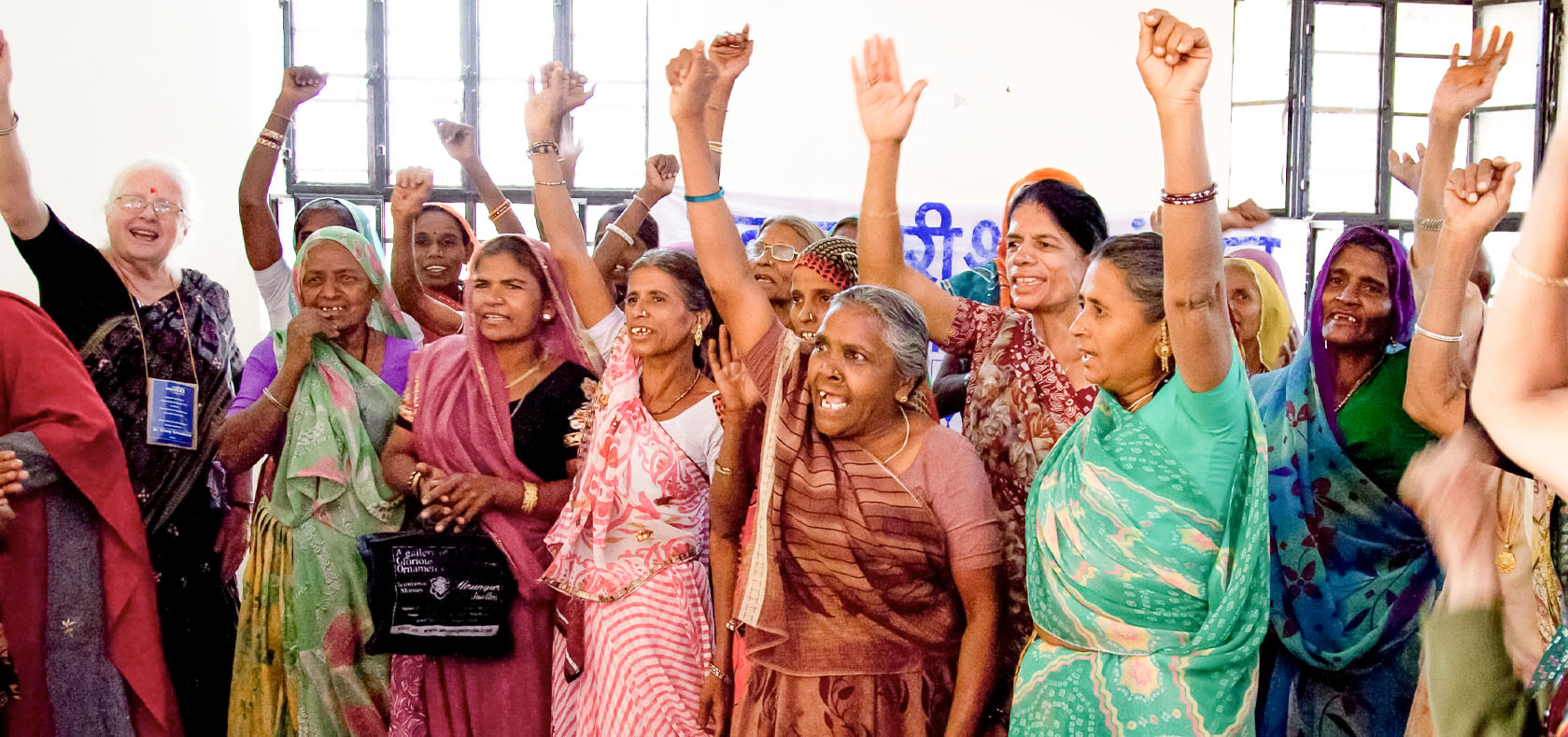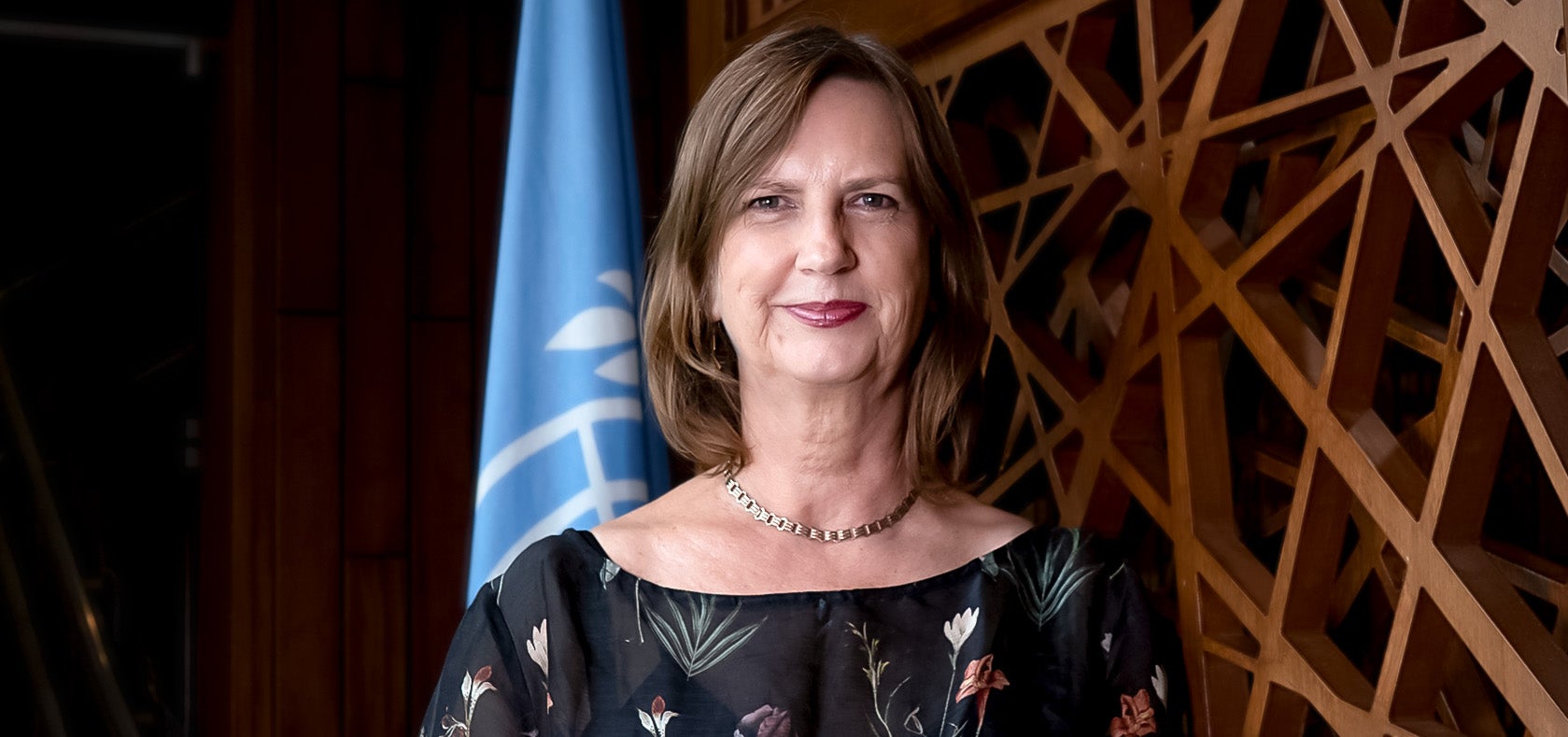The key to change: Women’s voice and influence
Date:
Author: Susan Ferguson

About the author

Susan Ferguson is the UN Women Representative for India. Ms. Ferguson joined UN Women in 2017, after a long career in international development. She has lived and worked in South Africa, Solomon Islands and Papua New Guinea, and has experience working in grass-roots development agencies; establishing and managing social services; working within Local, State and Federal Government in Australia on social policy and social programmes.
Women’s voice in decision-making is critical for the development of all. When women have a say in private and public affairs, decisions reflect their needs, and often the needs of their families and communities.
No country in the world has yet reached equality and that is because inequality between women and men is a complex interaction of unconscious social norms, that are often invisible to us, and institutions. Despite the challenges, we must grapple with the constraints to women’s voice to reach all the Sustainable Development Goals (SDGs) and unlock the economic dividend that will come with greater participation of women at decision-making tables – in domestic and public life.
Education, employment, access to health, childcare and safety are avenues most likely to improve women's agency and to enable women to negotiate changes from household level upwards.
Women’s influence is mediated through household relations. Household relations can be influenced by changes in legislation (for instance, domestic violence legislation); changes in policy and services (for instance, provision of early childhood services freeing women’s time for other productive activities); and provision of basic services (more educated men and women will be more likely to bend gender norms to enable women to work). Women’s decision-making in ‘household governance’ is a critical factor of women’s empowerment.
According to the NFHS-5 data for 2019-21 nearly 88.7 per cent of currently married Indian women tend to participate in key household decisions about healthcare for themselves, or make major household purchases. This stood at 84 per cent in NHFS 4 (2015–2016). The data for women having a bank account that they themselves use has seen a 35.6 percentage point jump from NHFS 4 to 5.
These are positive trends. However, gender roles are remarkably consistent cross-culturally, around the globe. Women continue to be associated with household caring and nurturing responsibilities, and men for economic activity outside the house, along with public decision making. These ideas exist even when men and women play other roles.
Women's voice and agency in decentralised local government in India has demonstrated changes to local government decision making. Many years ago, Duflo and Topalova (2004) researched the impact of reserved seats for women in local level government in India. For the first time anywhere in the world, this study unequivocally showed that reserved seats for women improved community level infrastructure. It improved government investment in public goods that benefited both women and men. It also demonstrated that women and men want different things from government and that women are more likely to invest in public goods that benefit other women and their families.
Since then, India has continued to improve on opening up spaces for women’s influence. Panchayats now have over 1.3 million elected women representatives in India, no doubt adding to the public good measured in 2004.
Women’s political representation at national level remains a mixed picture with 78 women in the Lok Sabha out of 543 members in total, and 11 women ministers in Cabinet. This is an historic high, although India has yet to reach 30 per cent women in Parliament which is considered critical mass to accelerate the impact of women’s influence. Although the current percentage is modest, it is a remarkable result given the fact that women barely made up one percent of the overall candidates in 2019 elections. Therefore, women candidates won at a strike rate of 73 per cent as opposed to their male counterparts at 66 per cent.
In the 2019 elections, women’s participation as voters exceeded that of men for the first time. The gender gap, or the difference between female voter turnout and male voter turnout, has not only closed but reversed to 17 per cent in the 2019 Lok Sabha elections. Women themselves have become a political force. This suggests an increasing assertion of citizenships rights amongst women. The growing turnout of women voters will influence political parties’ priorities and responsiveness to women voters’ interests.
In the private sector in recent years, the Government and the Securities and Exchange Board of India (SEBI) have mandated at least one woman on boards of directors. There are now 777 women sitting in private sector boards across India.
Women are gradually moving into non-traditional and higher income earning opportunities in science, technology, engineering and mathematics. Forty three per cent of the total graduates in these sectors are now women though the overall rate of young women finishing tertiary degrees is still quite low at 17 per cent.
Prime Minister, Narendra Modi, has declared “Women Led Development”, recognising the catalytic role that women play if they can influence and lead development decisions. During Covid, India released a range of social protection measures designed to provide a safety net for women and men. The ₹6,28,993 crore relief package was one of the biggest social protection measures announced in the world. Millions of women (and men) were held out of poverty because of this initiative. On the most basic level, reducing poverty, and decreasing inequality, is fundamental to unlocking women’s voice and agency as they still often sit at the bottom of the economic pyramid, facing intersecting social and political identities that affect their ability to exercise their rights – gender of course, but also class, caste, race, ethnicity, religion, to name a few.
Post-Covid, the declining female labour force participation rate remains an issue. This is critical for women’s welfare, and critical for economic development. The McKinsey Institute has done the figures and assessed if women in India had the same kind of opportunities in the labour market as men, roughly ₹59,000 crore (USD 770 billion) would be added to the economy.
The Government’s initiative to count women’s unpaid domestic labour in time use surveys is to be lauded for this has revealed that women work more than five hours extra (7.2 hours/day) providing care within families, than men who work 2.8 hours/day. Women’s attention to care work remains a key issue to solve between women and men, if women are to have the same ability to contribute to public life and the economy, as men. Over the years, India has initiated a number of programmes to reduce the drudgery of domestic work and improve childcare support – India has one of the longest paid maternity leave provisions with up to two years paid leave for certain categories of government employees. Increasing the amount of paternity leave for men could also contribute to more equal sharing of the domestic care work responsibilities; thereby freeing up time for women for work outside the home.
“Women Led Development” can indeed be catalytic. India has done much to open up doorways for women’s leadership to accelerate achieving the SDGs. There remain some critical issues like increasing the numbers of women in Parliament. Building on the gains of the increased number of women in Parliament, women voters’ strength, and the current Government’s commitment to women’s empowerment, the Government could move to accomplish passing the Women’s Reservation Bill. Around the world, reaching the 30 per cent target of women’s representation, has rarely occurred without the introduction of temporary specific measures.
The challenges of women’s equal participation in the labour market and the extent of unpaid care work also remain. If India can solve these difficult and sticky issues, the country will accelerate economic growth and be able to lead the global discourse on these pervasive challenges that continue to persist in almost every nation in the world.
The article has been authored by Susan Ferguson is the Country Representative of UN Women India Office. UN Women is a member of team UN in India, working together to help meet the Sustainable Development Goals
Originally published on 25 May 2022 by hindustantimes.com